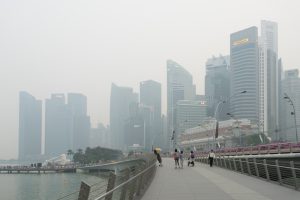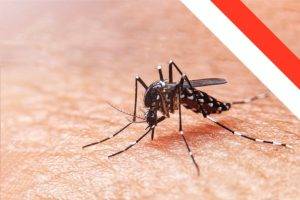As Indonesian wildfires rage on, Singapore faces its worst air quality in three years, marking a health crisis amid the ongoing haze ordeal.
The hazardous haze emanating from relentless Indonesian wildfires has led Singapore into a perilous air quality low, unseen for the past three years.
The persistent fires, predominantly in southern and central Sumatra, along with southern Kalimantan, have been spewing a deleterious smoke haze across the southern ASEAN region, severely impacting neighbouring nations, Singapore being paramount among them.
The Unfavourable Meteorological Milieu
Updated weather and haze situation reports from the National Environment Agency (NEA) elucidate the grim scenario. The southern ASEAN region, barring a few areas, endured dry weather, which has been a catalyst for the exacerbating wildfire situation. Conversely, the northern ASEAN region witnessed showers, keeping the hotspot activity at a low ebb.
Aerial Surveillance: Haze Boundaries
Satellite imagery reveals moderate to dense smoke haze covering significant stretches, particularly over Sumatra and Kalimantan. The haze boundaries, as detailed by NEA, encapsulate areas with dense smoke, whilst lighter haze areas remain indistinct due to their subtle nature in satellite captures.
These hazardous haze boundaries have been drifting northwestwards, besieging Singapore with unhealthy to very unhealthy air quality levels as reported by several monitoring stations in the vicinity.
Impending Weather Woes
The weather forecast isn’t offering much respite either. Dry weather is poised to prevail over central and southern Sumatra, southern Peninsular Malaysia, Java, and the Lesser Sunda Islands.
Although some shower activities are anticipated elsewhere in the southern ASEAN region, the ominous threat of escalating hotspot activity and transboundary smoke haze looms large. The prevailing winds, although expected to weaken, will continue to ferry the hazardous haze from east to southeast across the region.
Resilience Amid Respiratory Risks
Singaporeans have been showcasing an indomitable spirit in face of this environmental ordeal. However, the health risks associated with prolonged exposure to the hazardous haze are a growing concern. As the situation continues to evolve, timely interventions and cross-border collaborations are imperative to mitigate the health risks and ameliorate the air quality.
Efforts are underway to curb the wildfire havoc and its transboundary haze ramifications. ASEAN nations are urged to bolster their fire management strategies, ensuring a collective and concerted endeavour to extinguish the wildfires, and in the long run, foster a sustainable and haze-free regional environment.
Staying Safe Amid Elevated Haze Levels
The ominous cloak of haze that has descended upon Singapore, courtesy of the Indonesian wildfires, brings along not just an atmospheric gloom, but a myriad of health hazards.
The elevated Pollutant Standards Index (PSI) levels are indicative of the precarious air quality, and as such, necessitate a vigilant approach to health and safety.
Here are some pragmatic measures Singaporeans can adopt to navigate through this phase.
Arm Yourself With Accurate Information
Staying updated on the current PSI levels and air quality forecasts is crucial. Reliable sources such as the National Environment Agency (NEA) provide real-time updates and advisories. These can be instrumental in planning your day and minimising exposure to the hazardous haze.
Seek Solace Indoors
When PSI levels soar, the sanctuary lies indoors. Keeping windows and doors closed, and using air purifiers, can significantly improve indoor air quality. It’s advisable to postpone outdoor activities or reschedule them to times when the air quality is relatively better.
Embrace the Mask
Wearing masks, specifically those rated N95, can provide a substantial level of protection against the fine particulate matter present in the haze. It’s a simple yet effective way to reduce inhalation exposure to airborne pollutants.
Medicinal Readiness
Individuals with pre-existing respiratory or cardiac conditions should ensure they have an adequate supply of necessary medications. Additionally, it’s prudent to have a contingency plan and know the nearest healthcare facilities, should an emergency arise.
The haze crisis caused by Indonesian wildfires presents a challenge, not only to Singapore but to the wider ASEAN region. As nations grapple with the environmental and health ramifications, the essence of collective action and community resilience shines through. It’s a stark reminder of the interconnectedness of our ecosystems and the imperative for a unified approach towards fostering a more sustainable and resilient region.
References
- Haze – The National Environment Agency. (n.d.). Default. https://www.haze.gov.sg/














